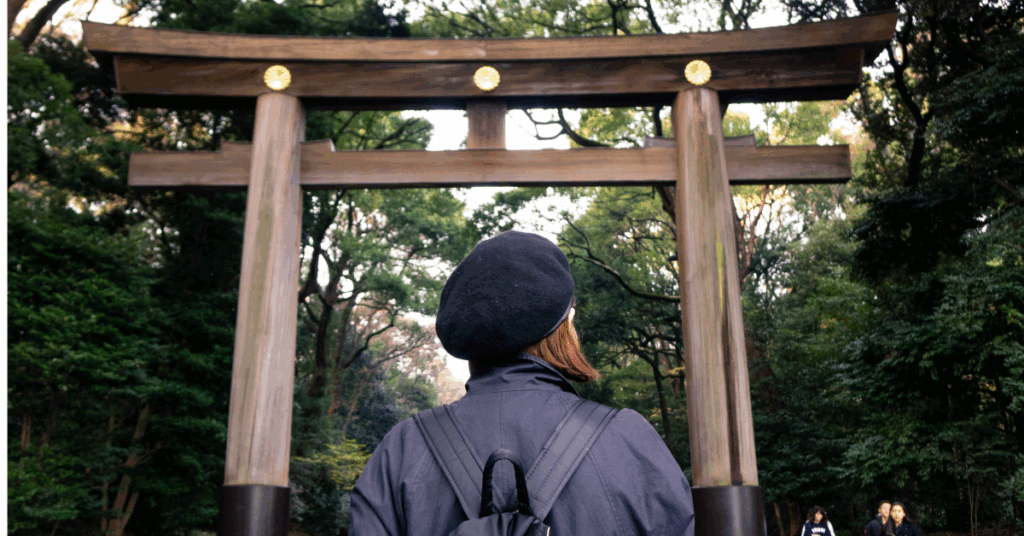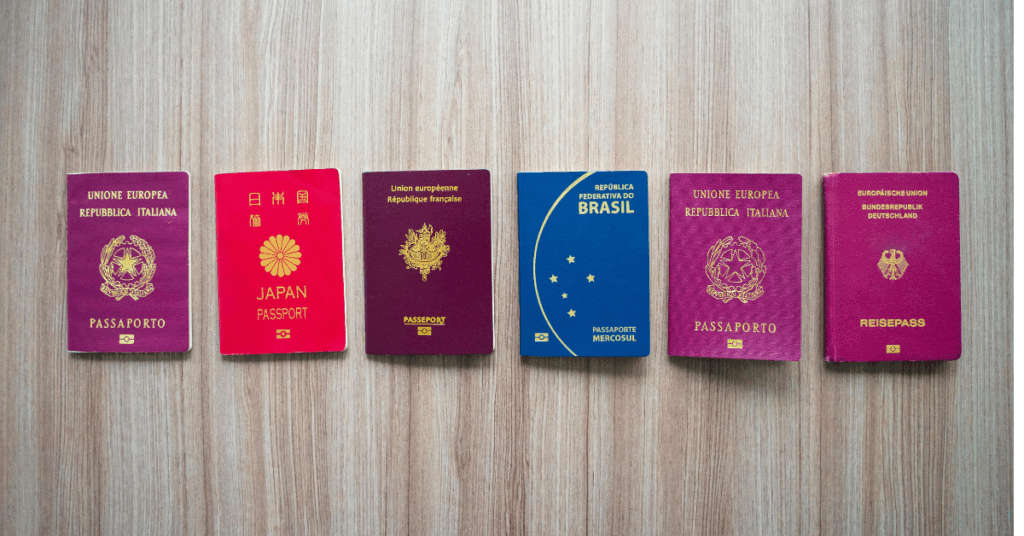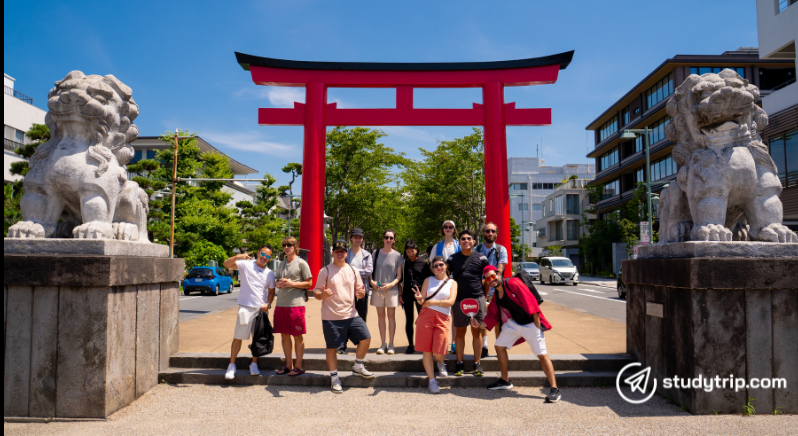Study Trips for Schools – Language Learning That Goes Beyond the Classroom
What if your students could use the language they’re learning, not just study it from a book? On our study trips for schools, language comes alive through real-world experiences and cultural exploration.
Our study trips for schools are carefully designed to balance formal language instruction with cultural immersion. Let’s explore what a typical day looks like for a student participating in one of our short-term study trips—whether in Japan, Spain, France, Italy, or Korea.
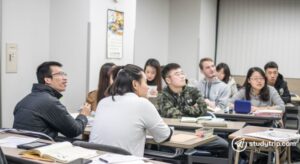
Morning: Language Lessons in a Global Classroom
After breakfast, students make their way to language school, either by foot or public transport. These morning journeys are not only part of the local immersion but also a chance for students to navigate a new environment independently and confidently.
Students are welcomed into a supportive environment, surrounded by others from around the world who are also focused on learning the language. The school staff are approachable and create a relaxed, home-like atmosphere.
Language classes are led by certified, native-speaking instructors and are taught exclusively in the target language, even at beginner levels. The teaching method emphasizes real-world communication. Using a combination of visuals, gestures, and contextual learning, teachers help students build confidence and fluency quickly. Group programs are typically adapted to match the school group’s level, and many include pre-arrival assessments.
“The school was fantastic, everything that we learnt could be used outside of school, eg: asking for directions at a train station, ordering food, asking to try clothes on, etc. the teachers always made the lessons fun and interactive and there was always someone laughing. “ – Ellie, UK
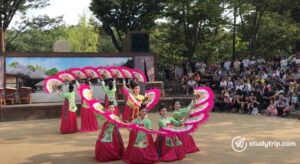
Afternoons: Practical Language Application Through Cultural Activities
After morning classes, students dive into hands-on cultural activities two to three times per week. These experiences are carefully curated by our team to reinforce classroom learning through real-world application. Activities vary by destination and season, but all are immersive, interactive, and designed to deepen students’ understanding of the local language and culture.
Japan
Students might try their hand at Shibori (traditional indigo tie-dye), make Japanese sweets in a wagashi workshop, or cruise Tokyo Bay on a yakatabune boat—all while practicing vocabulary and cultural etiquette with local instructors. Seasonal experiences such as cherry blossom walks or autumn temple visits further connect students with Japanese traditions.
Spain
In Spain, students may learn to prepare classic dishes in a paella cooking class, explore historic neighborhoods, or join a flamenco dance session to experience regional heritage. These activities provide context for vocabulary around food, directions, and social interaction.
France
A typical afternoon in France might include a visit to a local farmers’ market to learn food-related vocabulary and discover France’s rich culinary traditions and etiquette, a guided walking tour of Parisian landmarks, or a perfume-making class. Students build confidence speaking with vendors and locals, reinforcing classroom grammar and expressions in authentic settings.
Italy
In Italy, students often explore historic cities like Rome or Florence, practicing descriptive language and conversation skills in real-time. They might also take part in a cooking class to learn phrases every Italian foodie should know, or visit a local artisan for a hands-on workshop.
Korea
Cultural activities in Korea are a mix of modern and traditional. Students might wear hanbok while touring Gyeongbokgung Palace, learn to cook bulgogi, or take part in a K-pop dance class—perfect for building vocabulary related to food, movement, and pop culture. Each activity brings the language to life in an engaging and memorable way.
Throughout all destinations, bilingual tour leaders act as cultural and linguistic bridges, encouraging students to use newly learned vocabulary and guiding them through real-life interactions. These moments outside the classroom are often where language learning becomes most meaningful—connected to place, people, and memory.
“I had so much fun! The staff were lovely and responsive and we had a blast on the activities.” – Elizabeth, USA
“This Study Trip experience has quite honestly been a life altering moment for me, as dramatic as it may sound it’s true! Japan was always a dream destination for me but I wanted some pre-booked activities, classes & people to meet to make the trip worthwhile and the StudyTrip / GGN absolutely delivered and exceeded what was offered.
I now have a clearer focus on my goals to study / live in Japan in the future thanks to the 3 week taster course of sorts, and we couldn’t have asked for more friendly, cooperative, and more understanding guides and staff to assist us through the journey. I leave Japan tomorrow feeling fulfilled, overjoyed, and with a group of new lifelong friends, thank you!! “ George, UK
Evening: Independent Time and Reflection
In the evenings, students often have free time to explore local neighborhoods and events or enjoy dinner together. Some use this time to review vocabulary or write in a journal, while others may practice conversations with their host family or peers.
As the day winds down, students return to their accommodations, which may vary depending on the location — from comfortable hotels and student dormitories to immersive homestays with local families. Each setting offers its own unique opportunity for relaxation and cultural immersion, allowing students to unwind while continuing to absorb the language and customs around them.
“As I have told everyone, it was one of the best trips of my life. It’s not about visiting a lot of things, it’s about experiencing the country from the inside. And I think this trip achieves that experience. You do not feel like a tourist who sees the city from the outside, you feel part of it and that is what makes it so special. I definitely recommend the trip. It is worth it. “ – María, Spain
Weekends: Exploration and Language Application
On weekends, students may embark on day trips or overnight trips to further explore the country. These outings help students on school trips abroad understand the broader cultural context and give them more opportunities to use the language. For example, students studying at a language school in Rome might spend a weekend in a smaller town, exploring historic sites, hearing a different regional dialect, and experiencing the rich cultural heritage and local traditions found in small towns in Italy.
Why Study Trips Work for Schools
Study trips for schools are more than sightseeing tours—they are educational journeys that align with curriculum goals and support language development through experiential learning. These programs:
- Improve communication skills and language confidence
- Foster intercultural awareness and empathy
- Enhance classroom learning with real-world practice
- Strengthen group bonding and independence
Whether your students are learning Japanese, French, Korean, Italian, or Spanish, a study trip abroad offers them a rare opportunity to connect language with lived experience and has a major impact on their futures. Want to know more about how study trips work – check our FAQ.
Partner with Us
We specialize in organizing custom study trips for schools that combine structured language learning with meaningful cultural exchange. Our multilingual team works with schools, universities, and educational tour operators to deliver solutions—from airport pickup to final certificates.
If you’re ready to offer your students an unforgettable global learning experience, get in touch with our team today.
